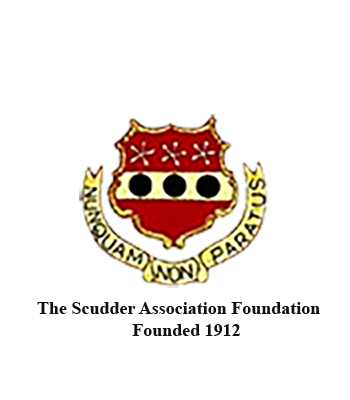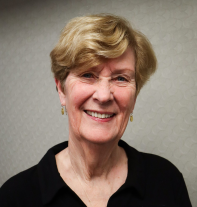
Church of the Crossroads, Honolulu, HI
The first Scudders to Hawaii grew up in India in the 1860s and 70s. As children of the second generation of American Scudder Protestant missionaries in British India, their parents were doctors and teachers offering alternatives to the Hindu caste system and Islamic fundamentalism with the teachings of Jesus. Scudder involvement in India continues to this day.
After seminary, both Doremus and Frank Scudder wanted to join their cousins in India. Different in temperament – Doremus, the articulate intellectual; Frank humble and soft-spoken – the mission board guided them to be pioneers in the new mission field of Japan. Doremus served in Japan from 1884 to 1888. Frank and his wife Florence served in Japan from 1895 to 1906.
Growing up in India, both Doremus and Frank were aware of the richness of the Hindu and Islamic spiritual traditions as well as their weaknesses – the Hindu caste system, the practice of widow sacrifice and, for both religions, the propensity of some believers to absolute fundamentalism.
In their work in Japan, they were exposed to the rich Buddhist spiritual tradition and animist Shintoism with their positive and negative aspects. In India, America and Japan they encountered many wonderful people of various faiths. As a result, their goal as missionaries was not to change people’s culture but to offer them new ways of thinking and being through the teachings of Jesus.
In 1904 Doremus was called to head the Hawaiian Board of Missions in Honolulu. (Today, that position would be the Conference Minister of the United Church of Christ). The Church at that time was split on racial issues. Some Church members thought its mission was to serve Euro/Americans and Hawaiians. Many of these Church members had a distrust of Hawaii’s majority Asian population. Other Church members felt that it was imperative to expand the mission to include Asian immigrants. To Doremus the mission was clearly to work with Hawaii’s Asian youth and strengthen religious tolerance within the church as a whole. As editor of The Friend, he used the widely distributed Church monthly newspaper as his mouthpiece.
In his 10th year of missionary service in Nagano, Japan, Frank’s wife Florence died of breast cancer, leaving him with three young children to care for. Learning of this tragedy, Doremus convinced the Hawaiian Board to bring Frank to Hawaii to minister to the Japanese plantation communities. He focused his work on the first Japanese generation born in the islands – a population stranded between two worlds.
Doremus and Frank were not alone in extending the church mission to Asians. Many of the children of the first missionaries to Hawaii wanted to help. Members of the Damon family took a particular interest in China and started a school in Honolulu for Chinese boys. Members of the Atherton and Richards families were strong supporters of the Church’s Japanese outreach program as well as a school for Japanese male orphans run by an early Japanese Christian convert. Frank traveled to the neighboring Hawaiian Islands (by sea) to establish church youth groups in the Japanese plantation camps. His work helped to help bridge the gap between immigrant parents and their children, born into American citizenship without knowing American cultural values. The plantations camps were not the best examples of American values. Living conditions were poor and discrimination was all too obvious. Racist plantation managers posed many challenges for Frank as he worked with the plantation workers’ children.
In his inter-island travels, Frank took with him a steamer trunk full of costumes. One of his popular teaching strategies was to have children of Japanese plantation camps act out Bible stories in English. Their parents attended the performances and Frank explained the stories to them in Japanese. Occasional field trips – with everyone sleeping on deck of an inter-island steamer – allowed these youth groups on different islands to meet each other. In addition to helping Doremus edit The Friend, Frank started his own newsletter, The Mystic Messages, to knit together his scattered youth congregations with news and mini sermons in the form of inspirational stories. These messages came out every few months from the 1920s to the 1950s.
Having helped to re-set the mission of the Hawaiian Board on a multi-cultural path, Doremus accepted a call in 1907 to be the minister of Honolulu’s Central Union Church. All the while, he remained the editor of The Friend, and helped to facilitate the birth of The Mid-Pacific Institute (MidPac), the first attempt at a multi-cultural boarding and day school. The Hawaiian Board closed and sold the land under several of its separate schools in downtown Honolulu, then combined and relocated them to a beautiful property in Manoa Valley near the University of Hawaii. In 1916 Doremus was called to minister to the Tokyo Union Church. In 1918 he assisted with the with Red Cross Russian Revolution Relief work in Siberia. From 1919-20 he led the Hawaii Mission Centennial before his retirement in California.
Meanwhile, Frank’s scattered youth congregations became of age, with many students coming to Honolulu to attend MidPac and the University of Hawaii. Neighbor island churches began having both Japanese and English services, shifting to English over time. The larger population in Honolulu enabled the formation of ethnic churches like the Japanese Makiki Christian Church and the Chinese Christian Church that included services in Japanese or Chinese. Many students preferred to be with their own age group with services in English, leading to the birth of Church of the Crossroads in 1923, located at the Mission Memorial Auditorium (now part of the Honolulu City Hall complex). Several years of planning led up to the formation of the church. In addition to Frank’s Japanese youth group there were similar smaller Hawaiian, Chinese and Filipino groups with their own advisors who planned for the church with their youth groups. Initially many of these students were at MidPac. McKinley High School and the university. As the group grew and aged, it needed a place of its own. The present church is ideally located near the university
Frank was loved and respected as a member of Crossroads for over thirty years. He suggested the name of the church as a meeting place of eastern and western cultures. The gold tree on University Avenue was planted in his honor, the Scudder Building named after him, as were earlier incarnations of the church organ and tower chimes.
Architecturally, The Church of the Crossroads is well known in Honolulu for its multi-cultural design. The blue roof recalls The Temple of Heaven in Beijing. The red columns of the courtyard represent the architecture of Japan and China. And there is Hawaiian symbolism in the cast stonework at the sanctuary entrance and on the altar. Carvings representing four Asian religions that preceded Christianity are on either side of the chancel. They are, from left to right, Zoroastrianism and Judaism. Buddhism and Hinduism. The church intended to welcome all people in Christian fellowship. It was not interested in theological controversy.
The Mission of the Hawaiian Board for the first half of the 20th Century was the creation of a Christian community out of many ethnic groups based on an understanding of democracy and the best of American values. The Protestant Mission to Hawaii in the 1820s was comprised of the grandchildren of participants in the American Revolution of 1776. While not part of Hawaii’s original missionary movement of the 19th century, Doremus and Frank were also products of the American Revolution. Their grandfather’s grandfather was a member of the Continental Congress, signed the first U. S. Constitution and died in the Revolution. American democratic ideals meant much to them.
The Revolutionary heritage of Hawaii’s 1820 missionaries led some, but not all, of the “sons of the mission” to revolt against the European style monarchy being created by King Kalakaua. This overthrow of the kingdom marked the first split in Hawaii’s Christian denominations. The second split was over Asian immigration. The 20th century healing process began under the Scudders and members of some of the mission families, among them were members of the, Atherton, Richards, Damon, Waterhouse and Wilcox families. These Hawaiian mission families had roots in New England; many are Scudder cousins dating from the seventeenth and eighteenth century
During World War II the internment of Japanese American citizens dealt a blow to the America that Frank stood for. In his retirement he continued his Mystic Messages and wrote frequent letters of encouragement to his students in internment camps on the US mainland.
Since the founding of Crossroads, the vision of a multi-cultural church in democratic America remains a vision that needs constant care and attention.


